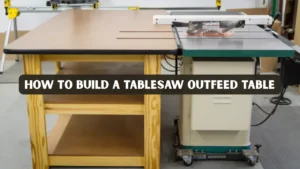Key Takeaways
- Learn how to build a range hood that enhances kitchen aesthetics and functionality.
- Understand the step-by-step process from planning to installation.
- Discover tips for customizing your range hood to fit your kitchen’s design.
- Save money by opting for a DIY approach instead of purchasing pre-made units.
- Ensure safety and compliance with local building codes during installation.
Why Build a Range Hood Yourself
Building a range hood is a rewarding project that enhances both functionality and aesthetics in your kitchen. It helps eliminate smoke, grease, and unwanted odors, ensuring your cooking space remains clean and comfortable. Beyond practicality, crafting your own hood gives you control over materials, finishes, and dimensions, letting you design a feature that complements your kitchen’s overall style.
When you build a range hood, you also create a unique centerpiece that adds value to your home. Whether you prefer a modern, rustic, or farmhouse look, the process allows customization to fit your taste. Plus, a DIY installation can be more cost-effective than purchasing a pre-made model, offering a sense of accomplishment when you see your handiwork transform the space.
Tools and Materials Needed
Before you begin, gather the following tools and materials:
Materials:
- Plywood or MDF for the hood body
- 2x4s for framing
- Wood screws and nails
- Metal vent ducting
- Range hood insert (fan)
- Wood glue
- Paint, stain, or finish
- Decorative molding or trim
Tools:
- Circular saw or table saw
- Power drill with bits
- Screwdriver
- Measuring tape and square
- Clamps
- Sandpaper or electric sander
- Safety gear (gloves, goggles)
Having all necessary materials and tools on hand ensures a smooth and efficient building process.
Step by Step Process
Step 1: Planning and Measuring
Proper planning is crucial when you build a range hood. Follow these steps:
- Measure the width of your stove or cooktop. This ensures your range hood fully covers the cooking area for maximum smoke and odor extraction.
- Decide on the height of the hood to ensure adequate ventilation. The ideal distance is typically 24–30 inches above the stove, balancing efficiency and safety.
- Sketch a design that includes trim, molding, and any decorative elements. This helps visualize the final look and ensures all materials fit your chosen kitchen style.
- Check the location of your ductwork to plan vent placement. Proper alignment makes installation easier and improves airflow performance for your hood.
Tip: A well-planned design reduces mistakes during construction and ensures the hood fits perfectly.
Step 2: Building the Frame
The frame provides the structural support for your hood.
- Cut 2x4s to the required lengths for the frame. Accurate cuts will ensure your range hood structure fits perfectly and remains sturdy during installation.
- Assemble the frame using screws and wood glue. This combination provides strong joints that hold up well against heat and moisture over time.
- Ensure corners are square using a measuring square. Proper alignment keeps the hood balanced and prevents gaps or uneven surfaces later.
- Add cross braces for extra stability. These supports strengthen the frame, especially if you plan to add heavier decorative panels or trim.
Pro Tip: Use clamps to hold pieces together while screwing to prevent shifting.
Step 3: Constructing the Hood Body
Now, attach the panels to create the main hood body:
- Cut plywood panels according to your design. Precise measurements help the panels fit seamlessly onto the frame, creating a professional-looking structure.
- Attach panels to the frame using screws and wood glue. This ensures a durable bond that can withstand heat and daily kitchen use.
- Ensure edges align perfectly to prevent gaps. Proper alignment not only improves the look but also enhances the hood’s overall strength and stability.
- Sand all surfaces for a smooth finish. A well-sanded surface prepares the wood for paint or stain, giving your range hood a clean and polished appearance.
Using hardwood for the exterior provides durability and a premium appearance.
Step 4: Installing the Vent and Fan
A key function of your range hood is ventilation.
Always follow manufacturer instructions for electrical connections and ventilation requirements.
Step 5: Adding Trim and Finishing Touches
Enhance your hood’s aesthetic appeal with decorative elements:
- Add crown molding or trim to corners and edges. This step enhances the visual appeal and gives your range hood a custom, built-in look.
- Apply wood filler to any gaps or screw holes. Filling imperfections ensures a flawless surface ready for finishing.
- Sand surfaces again for a smooth finish. A final sanding removes any rough spots and helps paint or stain adhere evenly.
- Paint, stain, or seal according to your kitchen décor. Choose a finish that complements your cabinetry and protects the wood from heat and moisture.
Optional: Add accent features such as metal corner brackets or custom carvings for a unique look.
Step 6: Installing the Range Hood
Once the hood is built, it’s time to install it:
- Position the hood over your stove or cooktop. Align it carefully to ensure centered placement for both functionality and aesthetic balance.
- Secure it to the wall studs using screws or mounting brackets. Fastening into studs provides solid support for the weight of the hood.
- Connect the ductwork to your existing vent system. Make sure all joints are tightly sealed to optimize airflow and reduce noise.
- Verify the range hood is level and firmly attached. A level installation ensures smooth operation and prevents strain on the ducting or mounting points.
Safety Tip: Have a second person assist when mounting heavy hoods to prevent accidents.
How to Customize Your DIY Range Hood
Personalization is the best part of DIY. Here are creative ideas to make your range hood unique:
- Rustic Style: Use reclaimed wood and a distressed finish. This creates a warm, vintage appearance that pairs beautifully with natural textures and earthy tones.
- Modern Look: Add sleek straight lines and metallic paint. A minimalist approach with clean edges enhances contemporary kitchen designs.
- Farmhouse Feel: Combine white paint with oak trim. This blend gives a cozy, timeless charm that complements classic cabinetry and neutral palettes.
- Industrial Design: Incorporate rivets and steel brackets. Mixing wood with metal elements delivers a bold, urban-inspired aesthetic that stands out.
You can also add LED lighting strips under the hood for visibility and ambiance.
Real World Experience: A DIYer’s Journey
When I built my first custom hood during a kitchen remodel, I faced challenges with uneven walls and vent placement. Using cedar shims to align the hood and adjusting the ducting solved both issues. The project taught me the importance of planning and patience.
Today, that range hood not only enhances ventilation but also adds a handcrafted charm to the kitchen, a daily reminder of what skilled DIY work can achieve.
Maintenance and Care Tips
A well-built hood can last for decades if properly maintained.
- Wipe down surfaces weekly with mild soap and water. Regular cleaning keeps grease and residue from building up on the hood’s surface.
- Clean filters monthly to maintain airflow. Removing and washing filters ensures your ventilation system continues to work efficiently.
- Refinish the wood every 2–3 years to prevent moisture damage. A fresh coat of sealant or paint protects the material and keeps it looking new.
- Check ducting periodically for clogs or leaks. Proper maintenance of the duct system helps sustain strong suction and reduces energy loss.
Regular maintenance ensures your hood continues performing efficiently while maintaining its visual appeal.
Common Mistakes to Avoid
Even skilled builders make errors. Here’s what to watch out for:
- Forgetting to plan vent placement before framing. This mistake can cause major installation issues later and reduce the hood’s efficiency.
- Using cheap plywood that warps over time. Investing in quality materials ensures your range hood remains durable and visually appealing.
- Ignoring safety gear while cutting or sanding. Always wear goggles, gloves, and a dust mask to protect yourself during construction.
- Failing to check alignment with upper cabinets. Misalignment can make the hood look uneven and disrupt your kitchen’s symmetry.
- Overlooking sealing joints, which leads to air leaks. Proper sealing keeps your ventilation system effective and prevents heat or smoke from escaping.
By avoiding these mistakes, you ensure a long-lasting, high-performing hood.
Conclusion
Building a range hood is more than just a weekend DIY project. It’s an opportunity to enhance your kitchen’s functionality and style. A custom-built hood not only improves air circulation but also becomes a statement piece that complements your décor. By choosing the right design, you can create a unique feature that reflects your personal taste.
When you build a range hood, following this guide and selecting durable materials ensures it performs efficiently and looks stunning. Careful planning and proper measurements will give you a professional-quality result that transforms your cooking space into a more enjoyable and visually appealing part of your home.
FAQs
Can a beginner build a range hood?
Yes! With careful planning, step-by-step instructions, and proper tools, beginners can successfully build a functional and attractive range hood.
How much does it cost to build a DIY range hood?
Costs vary depending on materials, but a DIY hood typically costs 40–60% less than store-bought options while allowing for customization.
What wood is best for a range hood?
Hardwoods like oak or maple provide durability, while plywood or MDF can be used for painted hoods.
How do I maintain a wooden range hood?
Regularly dust, wipe with a damp cloth, and reapply a protective finish every few years to keep the wood looking fresh.
Can I include a range hood light?
Yes, many inserts include built-in lights. Alternatively, you can install LED strips inside the hood for illumination.




